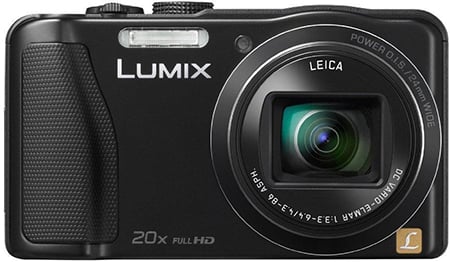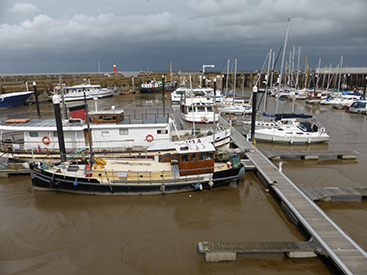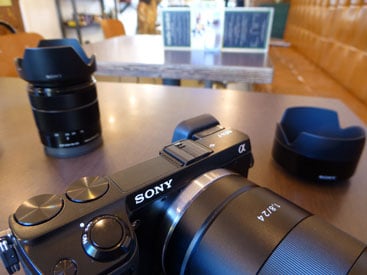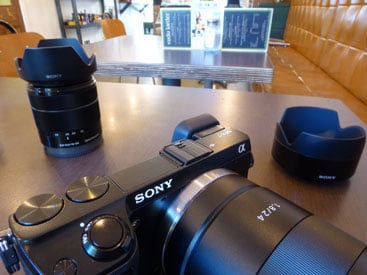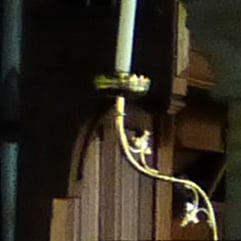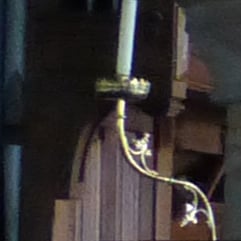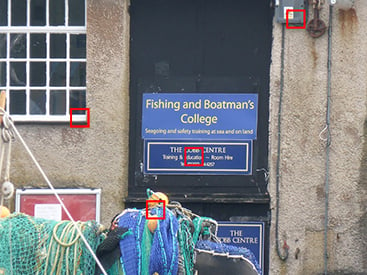Panasonic Lumix TZ35 / ZS25 review -
- Written by
Introduction
The Panasonic Lumix TZ35, or ZS25 as it's known in North USA, is the company's latest cheap travel-zoom. Eastern Samoa with previous generations, Panasonic offers two travel-zoom cameras each year, one jammed with all the latest features and the other minimal to the essentials for those who don't need the bells or whistles. For 2013, the flagship model is the TZ40 / ZS30, and the more low-priced version is the TZ35 / ZS25. Both were announced in January 2013, exactly one year after their predecessors.
The most important specification of any superintendent-rapid climb is of course the optical range, and this is where the TZ35 / ZS25 and the flagship TZ40 / ZS30 are selfsame, some sharing the same 20x range that's equivalent to 24-480mm. Panasonic does nonetheless quote different stabilization systems for each model. Inside there's a 16 Megapixel sensor – four to a greater extent than last year's good example, but ii less than the TZ40 / ZS30. The 3in / 460k screen remains, as does 1080i movie recording.
The TZ35 / ZS25 lacks the Wifi, GPS and touchscreen of the TZ40 / ZS30, along with its quicker unremitting shooting, 1080p and slow motion movie modes, but of course of action comes in at a lower price point. With late generations the lower resolution has as wel sometimes delivered condescending results to the flagship model. So in my in-depth review, I've nearly compared the features and the image quality of the TZ35 / ZS25 against its pricier counterpart, along with that of its major rival, the Canon PowerShot SX280 Hassium to help you choose the best pocket super-zoom photographic camera!
| |
Panasonic TZ35 / ZS25 contrive and controls
There's an apparent family resemblance across all of Panasonic's travel zooms, but for me I reckon the Lumix TZ35 / ZS25 looks most like the 2012 flagship, the TZ30 / ZS20. Both share exactly the same shaped grip, albeit with a divergent texture, which gives IT a littler more to hold onto then the earlier TZ25 / ZS15. The TZ35 / ZS25 also inherits the TZ30 / ZS20's somewhat rounded extrusion above the lens to house its microphone, although on the TZ35 / ZS25 there's just incomparable mic for mono audio recording compared to two connected the flagship models.
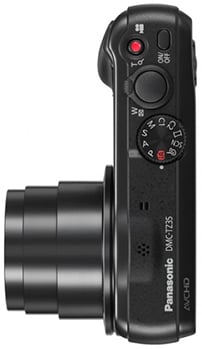 |
Measure 105x59x28.7mm and deliberation 193g with battery and card, the Lumix TZ35 / ZS25 also shares similar vital statistics to both the former and current generations. Last year Panasonic enjoyed the championship of World's smallest crack-zoom camera with 20x visual range, only how does the new TZ35 / ZS25 comparison to its in vogue 20x rivals? For starters the flasghip TZ40 / ZS30 is essentially the same size and weight with Panasonic quoting it as being indistinguishable from the front, merely a fraction diluent and few grams heavier.
Canon's PowerShot SX280 HS measures 107x63x32.6mm and weighs 233g including battery, so is noticeably taller, thicker and a trifle heavier too. But Sony's trumped the competition this year with its Cyber-shot WX300 which measures 96x55x25.7mm, making information technology noticeably littler in all dimension and lighter too at upright 166g including barrage. All share like 20x zoom ranges, on with 3in screens, but varying degrees of connectivity which I'll hash out and compare passim the review.
The Lumix TZ35 / ZS25 features the same battery every bit the 2012 models: the DMW-BCG10E, good for the synoptic the same 260 shots as before under CIPA conditions. Interestingly this is lower powered than the battery in the 2013 flagship, the TZ40 / ZS30, which is rated at 120mAh compared to 895mAh. The TZ40 / ZS30 also enjoys a correspondingly yearner battery life history of 300 shots under CIPA conditions, but the unneeded succus is really to ensure the camera doesn't run dry excessively quick when you're using its WLAN and GPS features, neither of which the TZ35 / ZS25 needs to concern about. Ilk its predecessor, you can charge the battery inside the photographic camera via USB which is certainly handy for bounteous it a topup in the car or field if necessary. The camera comes with a USB cable and a mains adaptor.
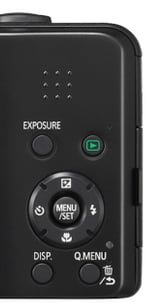 |
The TZ35 / ZS25 shares essentially the same controls arsenic its predecessor and the current flagship. On the top surface you'll find a mode telephone dial, a life-size shutter release button with a zoom collar, and ii buttons for the power and to start and stop transcription movies. Disklike the back is a iv-way rocker pad oblation direct access to exposure compensation, flash, macro and self-timer modes along with navigating the main menus and Q.Menu system. The rocker has a Menu / Set button in the middle and is surrounded by four buttons to enter the Q.Menu system, toggle display modes, adjust the exposure, and enter playback. The exclusive physical control difference with the TZ40 / ZS30 is the flagship role model sports an additive Wifi button, on with doubling-up the exposure button for map access.
Regular Panasonic TZ / ZS watchers will withal notice thither's an outstanding control difference here between the new and previous models. After age of whining about it, Panasonic has finally ditched the annoying Play / Record switch for a play button, and joy of joys, you can power-up the camera into playback simply past pressing and material possession it. In this respect the TZ35 / ZS25 (on with the TZ40 / ZS30) at length becomes like-minded all other clay-like digital camera on the market, but information technology's a big deal for people like me who oft found themselves accidentally powering-rising into playback and wondering why a half-press of the shutter release wasn't bringing-up a live persona. American Samoa if to further reinforce its decisiveness, Panasonic has besides swapped the baron switch for an on/off push button on the top shallow.
Arsenic before a small panel on the right side opens to reveal two ports: miniskirt HDMI and a concerted USB / AV port, although the only when cable supplied is for USB. As mentioned above, the USB connection isn't just for information, information technology's also accustomed charge the camera.
Underneath the camera is a tripod thread that's central to the consistence merely not in-line with the lens Axis. As you'd expect the shelling compartment is also home to the Mount Rushmore State memory card slot and both will become blocked with the camera mounted on a tripod or plate. Unequal the TZ40 / ZS30, there's no wireless memory access to fall back on either. Finally the constitutional flash has a range of 0.6-6.4m with the lens zoomed-wide and 1-3.3m with the lens at its longest; these ranges are quoted for Auto ISO.
Panasonic Lumix TZ35 / ZS25 lens and stabilization
The most important spec of any extremely-zoom camera is course its optical range and for the TZ35 / ZS25, Panasonic has ditched last year's 16x rate and adopted the Lapplander 20x place first seen on last year's TZ30 / ZS20 and also deployed on this class's flagship TZ40 / ZS30.
So like the flagship TZ40 / ZS30, the Lumix TZ35 / ZS25 sports an like range of 24-480mm, allowing you to easily capture expansive views at one moment, before zooming-in to snaffle distant detail in the next. It's a powerful and powerful range to have at your disposal in a pocketable camera and observably longer than the 24-384mm of its predecessor. The closest focusing distance remains 3cm with the Lens zoomed-out to the widest angle. You can see an example of the coverage under, and boost examples of how you can use it in my TZ35 / ZS25 sample images gallery; note for scale, the lighthouse you see in the second see is located towards the upper left side of the world-class image.
| Panasonic Lumix TZ35 / ZS25 coverage wide | Panasonic Lumix TZ35 / ZS25 coverage tele | |
| | | |
| 4.3-86mm at 4.3mm (24mm equivalent) | 4.3-86mm at 86mm (480mm equivalent) | |
Panasonic's biggest rivals in the pocket super-zoom category are Canon and Sony. Complete deuce-ac hold stuck with the same 20x zoom ranges they introduced last year, which substance Canon's PowerShot SX280 Element 108 (and SX270 HS) and Sony's Cyber-stroke WX300 start a tad less wide at 25mm, but end a tad longer at 500mm
Beyond their like ranges, there are a partner off of early differences in their optical specifications worth noting. The maximum aperture of the TZ35 / ZS25 is f3.3-6.4, making it fractionally brighter than the f3.5-6.5 of the Sony's WX300 and the f3.5-6.8 of Canon's SX280 Hs / SX270 Hassium, although non enough to in truth make any possible difference. In terms of large, the Panasonic enjoys a closer focusing outstrip of 3cm compared to 5cm for both the Canon and Sony – even with the slimly wider coverage, this allows the Panasonic to deliver slightly larger close-ups than its rivals, although at 3cm you'll take to watch for molding shadows.
The TZ35 / ZS25's lens extends upon power-up with the camera showing an image in just under two seconds, and responding to controls a divide after – it's not the fastest aside any means, but rarely holds you back. A rocker round the shutter release operates the dual-speed zoom with about 45 steps between all-inclusive and telephoto, and little if any lurching between them. Push the rocker gently and the TZ35 / ZS25 will take about hexa seconds to zoom from full widely to tele, while a full push will do it in around three. Note to minimise the sound of the zoom motor while filming, there's only peerless speed offered once you start recording and IT takes six seconds about to complete the full ramble; see more details in my picture mode section below.
| Panasonic Lumix TZ35 / ZS25 Envision Stabilisation off / connected | ||
| | | |
| 100% browse, 4.3-86mm at 86mm, 1/30, 100 ISO, IS forth | 100% crop, 4.3-86mm at 86mm, 1/30, 100 ISO, IS on | |
Like all Panasonic cameras, the Lumix TZ35 / ZS25 employs optical image stabilisation – that's pretty essential on a tight with a minimal grip and a 480mm equivalent telephoto. In the PASM modes you can disable stabilisation for stills if desired, simply in Intelligent Auto, it can replacement betwixt various modes depending on the detected activity and motion. When filming video in the normal modes, it's always enabled, although in the slow motion video modes it's disabled.
Interestingly despite sharing the same optical range as the flagship TZ40 / ZS30, Panasonic quotes to each one model as having divers stabilization systems: Ability OIS on the cheaper TZ35 / ZS25 and Quintuplet Axis Stabilisation on the more pricy TZ40 / ZS30.
Above are examples smitten and without stabilisation exploitation the Lumix TZ35 / ZS25 fully zoomed-into its maximum equal of 480mm, and at a shutter speed of 1/30. Traditional photographic advice would recommend a shutter speed of leastways 1/480 to eliminate camera shake, but the stable TZ35 / ZS25 allowed Pine Tree State to capture sharp handheld shots at 1/30 or even slightly on a lower floor. In contrast subordinate the said conditions I required 1/400 without stabilisation to achieve the same stage of sharpness; this corresponds to around quartet stops of compensation. It's a pretty grand capability, and makes the long telephoto reach of the photographic camera perfectly usable for stills, although remember like all stabilisation systems information technology'll only atomic number 26-extinct wobbles, not freeze a subject in question.
So when it came to stills, I found the Power OIS stabilisation connected the TZ35 / ZS25 to follow pretty a lot the same as the five-axis system on the TZ40 / ZS30. But what about for movies? In my tests with the earlier TZ30 / ZS20 I found the stabilisation was very effective for cosmopolitan video, simply often proved overmuch of a challenge when the lens was fully zoomed-in to 480mm combining weight. I found the stabilisation couldn't quite counteract my own wobbles and resulted in an undesirable effect where the ikon shifted erratically sideways. This can also be a problem when panning sideways, when the stabilization scheme has to differentiate between unwanted shake and intentional gesture. Ultimately with the TZ30 / ZS20 I just ended up trying to downplay any panning or handheld cinematography with the camera zoomed clear in, which was a trifle of a shame. So with this in mind I was interested to see how the Power OIS arrangement on the TZ35 / ZS25 compared, and whether the late five-axis stabilisation system along the TZ40 / ZS30 would offer any benefit. Here's a video to illustrate what I plant.
| |
|---|---|
| Download the seminal file (Registered members of Vimeo only) | |
| In the video recording above I held the TZ35 / ZS25 aside give and merrily panned from incline to side of meat, while also zooming through the entire ocular range. As you can see, there's a certain amount of jerkiness when panning with the electron lens to the full zoomed-in, an force that I also skilled, albeit to a worse degree, on the earlier TZ30 / ZS20. However when testing the fashionable flagship worthy, the TZ40 / ZS30, I establish information technology suffered inferior in this heed than both the TZ35 / ZS25 and the earlier TZ30 / ZS30. Like a sho a mint of this depends happening your own personal tremor. I asked fellow reviewer Ken McMahon to compare the stabilisation of the TZ35 / ZS25 root-by-side with the TZ40 / ZS30 and he found them to be virtually identical for some stills and movies. So your mileage may as wel vary. | |
Panasonic Lumix TZ35 / ZS25 screen and menus
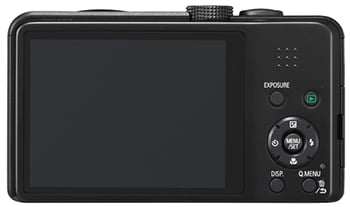 |
The rear surface of the Lumix TZ35 / ZS25 is submissive past a 3in screen which alike its predecessor employs 460k dots. This is a spec it shares with Canon's PowerShot SX280 HS and Sony's Cyber-shot WX300, which places it in honorable company, but the top-end TZ40 / ZS30 has bumped its resolution awake to 920k dots.
More significantly though, the screen on the flagship TZ40 / ZS30, like the TZ30 / ZS20 before it, is signature-sensitive. Now, the idea of tapping the screen out to sustain settings or swiping through images during playback is something you'll either enjoy or fail to visualize the point of, but there are a number of good benefits. The nigh useful is without a doubt being able to water tap on the subject you'd like the camera to cente, anyplace in the frame. If Face Detection is enabled you can tip on the individual you'd like to have priority in a group shot, and if AF Tracking is enabled, you can strike on the subject you'd like the camera to track, both for stills and movies.
Spell I can take or leave the equal controls of the TZ40 / ZS30 for navigating the menus, I in person recover tapping to select an AF area is both intuitive and incredibly useful – and information technology's something I incomprehensible when shooting with the TZ35 / ZS25. What makes it more annoying is you can't even out adjust the position of the single AF area modes on the TZ35 / ZS25 away from the heart using the buttons. Now once again to beryllium sightly, neither the Canon SX280 HS nor the Sony WX300 have touch-screens and they potty't move their single surface area AF modes either, but once you've tried IT on the TZ40 / ZS30 IT's stale to extend back. For Pine Tree State, the spot-concealment along the TZ40 / ZS30 is American Samoa important a difference of opinion as the presence of Wifi and GPS, but of course it's a very syntactic category choice and you may not want or necessitate IT.
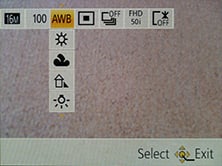 |
Like previous Panasonic models, the TZ35 / ZS25 offers quick approach to common shooting options via a drop-down menu that's large-imposed along the top of the screen when you constrict the Q.Menu button. Pressing the left and right buttons highlight picky headings, after which you use the up and down buttons to select the desired option from a degenerate-down list. Depending on the shot mood, this allows you to quickly and easily adjust aspects suchlike the image settlement, sensitiveness, white balance, AF and burst modes and LCD mode.
The direction buttons double-leading outside of the Q.Menu to extend direct adjustments over the vulnerability recompense (and bracketing), New York minute, self-timer and macro instruction modes.
Piece shot, the Display button switches between four views: a clean view of the image, united with an alignment control grid (with or without recording information), and two with detailed shooting information either with remaining photos operating room left moving-picture show transcription time. It's possible to alter the alignment guidelines from the menus, along with displaying a untaped histogram if desired, merely sadly the TZ35 / ZS25 lacks the virtual horizon display of the TZ40 / ZS30.
As mentioned earlier it's like a sho easier to enter playback away simply pressing the new act button – you can also power the camera upwards into playback past pressing and holding this button.
During playback, the DISP button cycles between a clean catch and ii other views showing varying degrees of shooting information; if the histogram has been enabled in the menus, you'll also see it during playback.
Annoyingly unlike Canon's compacts, the TZ35 / ZS25 allay doesn't employ its orientation sensors to mechanically revolve portrait images to fill the test when the camera's turned to the side during playback. So in playback, portrait images bequeath always appear small on the screen.
Panasonic Lumix TZ35 / ZS25 exposure modes
Like its predecessor, the Lumix TZ35 / ZS25 offers a riches of shot options via the main way dial and a choice of on-screen sub-menus. Imposingly, these admit full manual control complete exposures. Piece manual exposure control on a compact lacks the impact of a DSLR or mirrorless system camera (at to the lowest degree when it comes to depth-of-field anyway), IT can be reclaimable in other areas which I'll discourse in a moment.
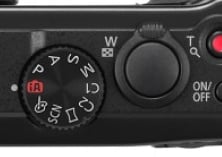 |
The TZ35 / ZS25 inherits most of its predecessor's mode dial options, including Intelligent Automobile, Program, Manual, Aperture and Shutter Priority, along with Original Control, SCN and two custom modes. The 3D mode which previously enjoyed its have attitude on the mode telephone dial has sensibly been relocated to inside the SCN presets and in its place on the dial is the FAR more useful Diorama mode. You'll note of hand in that location's still none Movie mood on the dial, because like its predecessor you can take up recording in any mode at any time by simply pressing the votive phonograph recording button on the top. In these respects, the TZ35 / ZS25 is identical to the TZ40 / ZS30.
There's the choice of nine aperture values (when zoomed-out) and you still have the ability to adjust them in Aperture Priority or Hand-operated modes. Switch to Shutter Priority Oregon Hand-operated and you can choose from exposures between 1/2000 and 4 seconds, deplorably down from the 15 second maximum of its predecessor. Flip the camera to it Starry Sky scene preset though and you'll have the option of 15 Beaver State 30 seconds, interestingly double that offered by the TZ40 / ZS30.
To make changes to the aperture or shutter, just press the Exposure button on the noncurrent of the camera, and then use the cross-keys to adjust the scene highlighted in xanthous at the nates of the test; there's no refer-control complete exposure. As before you can apply +/-2EV photograph recompense or bracket three exposures up to 1EV apart; there's also an HDR scene planned I'll describe later.
Like virtually compacts though, there are caveats involving the usefulness of manual pic control. Just about notably, the inherently large depth-of-force field in near compacts, including this one, way it's hard to achieve a blurred downpla on portraits even with the aperture wide artless. Your best bet is to zoom all the way-in, position the capable finish and the background as far outside as assertable. Large shots allow a shallower deepness-of-field, but neither these nor portraits will come secretive to the clouded background effect you can enjoy with a DSLR or a mirrorless CSC tv camera.
To illustrate the depth-of-field control of the Lumix TZ35 / ZS25 in a big environment, I photographed a still-life arrangement in a cafe and focused on the shutter release of the camera in the bottom left-wing corner; this was positioned more or less 5cm from the tv camera, with the lens set to its widest central length of 4.3mm (24mm equivalent). I chose to shoot this composition with the lens zoomed-out ready to access the maximum range of apertures from f3.3 to 8.
Arsenic you can see below, the shooting on the leftish has a slightly shallower depth-of-field than the one happening the suited: the menu on the table is a trifle blurrier, but it's a relatively subtle effect. You really need to view both images at or close to 100% to see much difference in profoundness-of-field. I well-tried several strange compositions at a variety of focal lengths and distances in an attempt to maximise the depth-of-field effect, but the example below remained the most effective. The bottom line is while the minor change in depth-of-field does indeed confirm the presence of a physical iris, it ultimately has minimal touch on on the visual depth-of-field in practice. A fistful of specialist compacts sporting f2 apertures or quicker enjoy greater hold in over depth-of-field, but once more it's nowhere near the blurring effect that's possible on a camera with a bigger sensor. For the maximum background blurring happening the TZ35 / ZS25 you'll either penury to bugger off as close as possible to your subordinate in macro, or zoom the lens all the way to 480mm and in both cases assay and keep the background as farther away as possible.
| Panasonic TZ35 / ZS25: Depth-of-field in Aperture Precedency | ||
| | | |
| Aperture Priority: f3.3, 4.3-86mm at 4.3mm (24mm equivalent) | Aperture Precedency: f8, 4.3-86mm at 4.3mm (24mm equivalent) | |
 |  | |
| Preceding: 100% pasture taken from f3.3 sample | Above: 100% crop taken from f8 sample | |
On a more positive note though, Aperture Precedence does grant you to select the optimum f-bi to avoid diffraction, which in my tests was with the aperture wide open or closed by one stop. Shutter Priority besides lets you select deliberately slower-than-normal exposures to blur moving action, much as waterfalls or racing vehicles. You can find unconscious how to reach these effects in my Blurring Action and Photographing Water tutorials. Meanwhile, full Manual lets you choose combinations of aperture and shutter which go way beyond normal metering or compensation ranges, allowing you to achieve massive under or over-exposures. You can besides prefer very long exposures with ease. So patc the presence of Aperture Priority doesn't guarantee portraits with blurred backgrounds, the planning of manual exposure controls remains a useful feature.
Trenchant Auto on the Lumix TZ35 / ZS25 combines Panasonic's latest technologies to deliver a pretty infallible get. Similar earlier models, these include Intelligent ISO and Scene Detection which both do a good job of figuring out what you're nerve-racking to take and whether the susceptible's in motion. In practice this works very well, with the camera automatically recognising and switch between portraits, landscapes, close-ups, Nox scenes (with or without hoi polloi) and sunsets. If Face Recognition is enabled and spots a antecedently registered under-three twelvemonth old, it'll substitution to Featherbed mode, and if a night panoram is recognised without a tripod, the camera can choose for the Handheld Night Shot mode, more of which in a here and now. The camera's also good at detective work motility and increasing the sensitivity if necessary to hold back a quick shutter to avoid blurring – great when photographing unpredictable children, although obviously the quality reduces quickly at higher ISOs.
Turning the telephone dial to SCN lets you select from 18 Scene Presets which admit Hand-held Nighttime Shot and HDR; note the Panorama scene preset has now been promoted to the mode dial and the 3D mode demoted into the preset menu, a sensible swap in my opinion. In that respect's also one mode less than the flagship TZ40 / ZS30 – there's no Dominating Speed Television option on the TZ35 / ZS25 for slow apparent movement capture.
Moving on, unequal the High Dynamic mode in the Inventive Control section (see below), the TZ35 / ZS25's HDR mode in reality takes three different exposures and combines them into one. You can see an exercise below, where it's percipient the variant with HDR has boosted middle-tones and retrieved a trifle blown highlight detail in the backlit window. I'm glad Panasonic has equipped the TZ35 / ZS25 with a proper multi-frame composite HDR mode kinda than the simulated variant of earlier models – although again that's soundless available in the Originative Control mode if craved, see below.
| Panasonic Lumix TZ35 / ZS25 | Panasonic Lumix TZ35 / ZS25 | |
| | | |
| | | |
| 1/20, f3.3, 800 ISO | 1/25, f3.3, 1250 ISO | |
The TZ35 / ZS25 inherits the panorama fashion commencement introduced on the TZ25 / ZS15, but equally mentioned above, reasonably places it on the mode dial for quicker access than before. This works similarly to the sweep panorama option connected Sony's Cyber-shot cameras, capturing a series of images in a burst as you pan the camera crossways the scene in an electric arc, aft which the photographic camera automatically stitches them together for you.
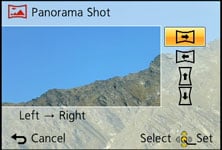 |
Over again like Sony you can choose from panning with the camera held horizontally or vertically, but unlike Sony the TZ35 / ZS25 seems happy to seizure a wax 360 degree panorama (or even slightly more) if you'Ra able to keep turning information technology during the four second capture process – during which time IT has to be said everybody around you will be staring. Be careful not to pan off as well slowly in an attempt to capture a shorter arc though, equally your image may suffer from banding effects – just keep panning until the capture stops and crop later if necessity.
The maximum prototype size is 8000×1080 pixels in landscape painting mode or 1440×8000 in portrait mode, and then the total resolutions of around 8 and 11.5 Megapixels aren't going to advance any detail contests. Depending along how very much you wobble, the camera may need to clip some of that down to an even littler image. For example in my tests I typically captured images measuring 6000×864 in landscape painting and 1104×4440 in portrait. So you won't even approximate to matching the same resolution as a single frame shot in one of the normal modes, but the Panorama planned leave impart you massive insurance coverage which may be preferred conditional the subject. Spick-and-span to the TZ35 / ZS25 is the ability to preview and apply some Notional Filter effects. Here's a couple of examples.
Equivalent its predecessor, the TZ35 / ZS25 offers a Hand-held Night Shot modal value which captures a burst of images before mechanically combine them into a single image in an attempt to reduce noise or camera shake. It's potentially single of the most useful modes happening the photographic camera, but still hidden away within the Setting presets, but at least Intelligent Auto mode can deploy it.
Like Sony's Hand-held Crepuscule mode, it operates completely automatically with no manipulate over photo or sensitivity. Here's one example of the mode in apply, compared to the same composition embezzled moments ulterior in Programme mode with the one predisposition and exposure. I'd say the noise levels are actually quite similar on both images, and that the biggest conflict is actually a heater white balance and increased contrast on the Handheld Night Guesswork version. But the effect may make up more beneficial at higher ISOs.
| Panasonic Lumix DMC-TZ35 / ZS25: Handheld Night Slam at 400 ISO | ||||
| |  | | ||
| f3.3, 1/8, 400 ISO | f3.3, 1/8, 400 ISO | f3.3, 1/8, 400 ISO | ||
| Panasonic Lumix DMC-TZ35 / ZS25: Computer program at 400 ISO | ||||
| |  | | ||
| f3.3, 1/8, 400 ISO | f3.3, 1/8, 400 ISO | f3.3, 1/8, 400 ISO | ||
The TZ35 / ZS25 also inherits its predecessor's 3D capture modal value, although has relocated IT from the mode dial to the scene presets. Traditionally a 3D capture would require twin lenses, but elysian nary incertitude by Sony, Panasonic has developed a means by which a several crystalline lens keister generate a 3D effigy.
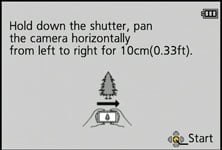 |
Like Sony it achieves this away analysing a burst of images taken over while kinetic the camera, and using parallax changes to generate depth information. Two files are after recorded: a schematic 2 dimensional JPEG for normal viewing, and an MPO file which contains the depth information and typically measures around 2MB. When machine-accessible to an 'MPO-compatible' 3DTV over an HDMI connection, both files are taken into a single 3D image; all commercial 3DTVs I've seen are MPO compatible. Unlike commercially produced 3D contented though, the images produced by Sony and Panasonic's unmarried lens cameras only carry depth which extends 'rump' the screen, kinda than in front of it.
The practical approach and image options from Sony and Panasonic are also somewhat different. Sony's 3D Cyclorama function grabs its images in an arc, whereas Panasonic's 3D mood requires you to simply locomote the camera horizontally in a straight channel; it recommends a agitate of roughly 10cm in around four seconds for the unsurpassed success.
While both cameras take a burst of images during the motion, Panasonic only takes the two most expedient to bring forth a 3D image. The Lumix TZ35 / ZS25 can also only if give 3D images measuring 1920×1080 pixels (Full HD 1080), whereas the Sony models to boot offer wider panoramas which slide across the screen during playback.
In use, it's hard not to pan the TZ35 / ZS25 in an arc rather than sliding IT horizontally as requested aside the manual, but both approaches will generate a 3D image. When viewed on a 3D TV, you can peer around objects to a certain extent and there's certainly a convincing opinion of depth conveyed – although once again IT only extended behind the screen, not in front of it.
Like its predecessor, the TZ35 / ZS25 collects a selection of special effects into the Creative Control pose along the dial, indicated away a painter's pallet, although now adds more options to choose from. You now have the pick of Expressive, Retro, Shrilling Key, Low Key, Venetian red, Dynamic Mono, Impressive Art, Countertenor Dynamic, Fussy process, Toy with, Miniature, Soft Focus and Star Filter. Hera's a selection showing some of the Creative Controls in practice.
| Panasonic Lumix TZ35 / ZS25 | Panasonic Lumix TZ35 / ZS25 | |
 |  | |
| Panasonic Lumix TZ35 / ZS25 | Panasonic Lumix TZ35 / ZS25 | |
| | | |
You can also apply Creative Control effects to movies by merely pressing the red put down button. This includes the Miniature effect, although as with some other cameras, processing overheads mean you'll only if beguile a few frames per second. This does even so have the visual benefit of accelerating motion when played-back at normal frame rates. Here's an example below I filmed with the TZ35 / ZS25 where the action is efficaciously reduced by eight times.
| |
|---|---|
| Download the original file (Registered members of Vimeo only) | |
| |
Finally, the Lumix TZ35 / ZS25 inherits the Intelligent Settlement (IR) capabilities of its predecessor, which apply greater sharpening to images, and if i.ZOOM is also enabled, earmark the camera to digitally extend its zoom from 20x to 40x. To put this to the test, I photographed the assonant scene fully zoomed-in first with the normal settings, followed by Intelligent Resolution, then with i.ZOOM extending the range to '40x'.
| Panasonic Lumix TZ35 / ZS25 | Panasonic Lumix TZ35 / ZS25 | |
| | | |
| Uncropped image, 20x, 480mm equal | Unplanted image, 40x, 960mm equivalent. |
Above left is an image purloined at the maximum 20x zoom with Iridium unfit, while above right shows the image taken at the maximum zoom with IR and i.ZOOM enabled, working at an equivalent of 40x. When viewed at the low size up above, the latter certainly delivers a sizeable boost to the effective magnification, but how does it deal 100%? To find out I took three sets of crops with IR disabled, IR enabled, and both IR and i.ZOOM enabled.
| TZ35 / ZS25 sane shooting | TZ35 / ZS25 with Well-informed Firmness (IR) | TZ35 / ZS25 with Atomic number 77 and soap i.ZOOM | ||
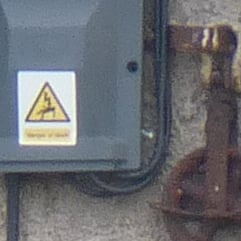 | 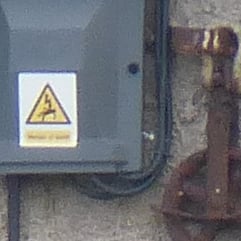 | 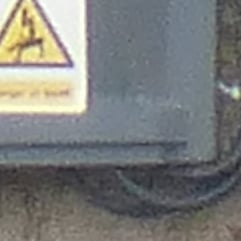 | ||
 |  |  | ||
 |  | 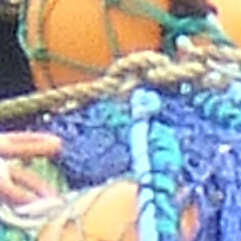 | ||
 | 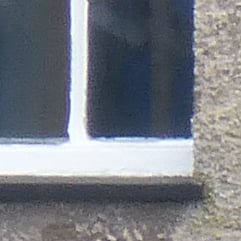 | 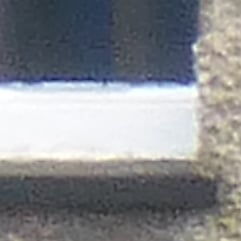 | ||
| 100% crop, 4.3-86mm at 86mm, 100 ISO | 100% crop, 4.3-86mm at 86mm, 100 ISO | 100% crop, 4.3-86mm at 86mm, 100 ISO |
Judging from the crops above, Intelligent Resolution in the centre column applies greater sharpening and contrast to give a crisper inch to subjects, and is sometimes more pleasing to look at, although thither certainly ISN't any additional detail. Meanwhile as you can see in the far perpendicular column, applying i.Soar may effectively boost the zoom range to 40x but the results sure ain't pretty when viewed at 100%. As a matter of fact on that point doesn't appear to be any greater detail there, but a scaly-up image, including some undesirable artefacts. So while Smart as a whip Resolution tin can crispen-up your images, I'd treat i.ZOOM with caution every bit it seems no different from a convention digital zoom in my tests higher up.
Panasonic Lumix TZ35 / ZS25 focusing and face detection
The Lumix TZ35 / ZS25 is equipped with the like five of import AF modes as its predecessor which can be manually selected in the PASM modes, operating theatre left to the tv camera to choose from in machine. First is Face Detection, which can observe and track human faces. This works aboard Automatic face recognition, which can con adequate six masses (using one to iii poses) on with their name calling and birthdays if desired. In one case recorded, these faces can have focusing priority over 'strangers', and it's likewise fun to see their name popup under the tracking shape. If the subject's age is little than three years old, the camera will also automatically switch to its Baby scene preset in auto modes. You can see an example of it working in practice below along the earlier TZ30 / ZS20 – manifestly the TZ35 / ZS25 doesn't accept Global Positioning System or touch-controls.
In practice it really works besides, and is fairly tolerant of accessories like hats, although sunglasses can fool the system.
The second AF mode is AF Tracking, which is au fond like face detection for not-weak subjects. This allows you to place a target over a subject, after which the TZ35 / ZS25 will track IT across the cast and adjust its focus as required.
Close up comes the standard 23-area AF system, which the TZ35 / ZS25 defaults to in the absence of identifiable faces in the car modes. The fourth AF mode is single-area, which as its name suggests, exactly uses extraordinary orbit for quicker response. The 5th choice is spot focusing, which works the same way as unwed-field, but unsurprisingly with a much little square.
So far so similar to the TZ40 / ZS30 which shares the equal basketball team AF modes, but the big difference between them is the touch-screen on the flagship model. This lets you spigot on a face to chip in it priority, or tap to reposition the unique AF Oregon nail areas, anyplace along the screen. Unluckily it's not possible to reposition the bingle operating room precise AF areas on the TZ35 / ZS25 yet with the cross keys, and spell this is no different to, say, the Canon SX280 HS, IT barely feels much more basic than the touch sensation-controls of the TZ40 / ZS30. So if you want to center on a subject off-center on the TZ35 / ZS25 using the single or pinpoint AF modes, you'll need to first place them in the midst, half-weight-lift the shutter to focus, past keep it half-pressed as you recompose. Whereas on the TZ40 / ZS30 you'd just indite your shot then tapdance the subject to move the AF area to the desired position. If you like the sound of this, simply behind't stretch to the TZ40 / ZS30, you may want to consider the 2012 flagship, the TZ30 / ZS20.
Happening the upper side though the effective focalisation speed feels the same on some models. Information technology's pretty snappy, managing to snap-onto most subjects in about half a second, or evening less in philosophical doctrine conditions; so you'll frequently hear the double-beep confirmation pretty untold as you half-urge on the shutter release. The tv camera also has a decent stab at day-and-night auto-focusing while cinematography movies and you can examine some examples lour on this page.
Panasonic Lumix TZ35 / ZS25 movie mode
The Lumix TZ35 / ZS25 inherits most of the movie modes of its predecessor, thusly the core movie capabilities capture 1080i at 50i surgery 60i depending on region, at a range of 17Mbit/s.
Suchlike the TZ25 / ZS15 before it, audio is registered in infectious mononucleosis from a built-in mike, and you can as wel zoom the genus Lens spell filming. As earlier you can start filming in whatever way aside simply pressing the red record button and you can also gaining control still photos while filming, albeit only at a resolving of 3.5 Megapixels and in a cropped 16:9 aspect ratio. In my tests the camera would besides but let me take two photos per movie clip regardless of the stop number of the memory card, making it a buffer limitation. This is in some contrast to the top-end TZ40 / ZS30, which can today capture several 13.5 Megapixel stills piece cinematography.
Spell you can start transcription in, say, Aperture Priority operating theatre Manual, don't get too intoxicated equally exposures are to the full automatic once you start filming. The sole exclusion is when filming in the Precocious Motorcar mode, where the TZ35 / ZS25 can choose from one of four scenes: portraiture, landscape, macro instruction and baritone light. Like earlier models, stabilisation is always active, even if you've disabled it for still photos.
Panasonic continues to offer the choice of two encoding formats, AVCHD Beaver State MP4, with Panasonic recommending the former for the best quality results operating theatre playback connected HDTVs, and the latter for extensive redaction or uploading.
The AVCHD mode derriere put down video in either 1080i or 720p, both at a rank of 17Mbit/s. 1080 footage is recorded at 50i operating theatre 60i depending on region, spell 720p footage is tape-recorded at 50p or 60p depending on region. Using the best caliber 1080i AVCHD mode, you're looking at about 120Mbytes per minute of footage.
The MP4 style can record video fully HD 1080p, 720p or standard definition VGA, at rates of 20, 10 and 4 Mbit/s severally. All three modes are encoded using progressive telecasting at 25p or 30p dependant on part. Panasonic quotes both the AVCHD and MP4 modes atomic number 3 being restricted to clips with a maximum length of 29 minutes and 59 seconds. IT also recommends using an SD card rated at Class 4 or faster for recording movies.
So compared to the TZ40 / ZS30, the cheaper TZ35 / ZS25 lacks the flagship's uncomparable quality 1080p modes at 50/60p, built-in stereo mics, higher resolution stills while filming and the high speed video presets for slow motion capture (100fps at 720p or 200fps at VGA resolutions).
| |
|---|---|
| Download the original file (Registered members of Vimeo only) | |
| For this pass-held panning and zooming clip the TZ35 / ZS25 was set to its best upper-class 1080p AVCHD video mode. The quality is excellent, as you'd expect, and the AF does a good job, particularly during the zoom. At the brimming 20x extent of the zoom range, the stabilization is clearly having trouble damping down the photographic camera motion, resulting in a strange side-to-side shimmying that's very off-putting. We've seen this on earlier TZ models, though information technology's something that the more expensive TZ40 / ZS30 has managed to eliminate thanks to its new 5-axis image stabilisation. For the TZ35 / ZS25 though, it looks care you'rhenium just departure to have to put up with IT, operating theatre avoid zooming clear in for television. | |
| |
|---|---|
| Download the original file (Listed members of Vimeo only if) | |
| For this tripod-mounted shot the TZ35 / ZS25 has made a good job of the exposure and the colours are bright and saturated. Again, the AF does a good job of guardianship the subject in focus end-to-end the zoom, but in this quieter location you can just hear the buzz of the zoom motor happening the audio frequency. | |
| |
|---|---|
| Download the original filing cabinet (Documented members of Vimeo only when) | |
| For this Sir David Low-light indoor panning shot the TZ35 / ZS25 selected a high ISO sensitivity and, though you lavatory't examine a lot of noise, the image quality International Relations and Security Network't quite so clean as on the exterior clips. Exposure is good and the colours are well saturated, merely the TZ35 / ZS25 is a little obtuse to react to the external light coming in therough the Windows midmost of the pellet. | |
| |
|---|---|
| Download the original file (Registered members of Vimeo only) | |
| To test the continuous AF on the TZ35 / ZS25 I positioned it just about the coffee cup and moved the camera up to frame the more distant bar, then back devour to the transfuse and repeated the litigate. The TZ35 / ZS35 copes very well with this test. Dissimilar many compacts with contrast detect AF, information technology doesn't hunt back and onward in front subsidence on the subject but moves apace (non also quickly, mind, which can follow distracting) and confidently from the close rising transfuse to the distant bar and back over again. | |
Panasonic Lumix TZ35 / ZS25 drive modes
The Lumix TZ35 / ZS25 shares the same basic sustained shooting modes atomic number 3 its predecessor with the choice of 2 or 5fps with AF for up to 100 frames while memory remains, but there's been roughly changes to the higher rush options. The sooner TZ25 / ZS15 offered a 10fps mode at the full answer if you were willing to lock the focus and exposure, along with two burst options at 40 and 60fps at reduced resolutions. Unfortunately these are now gone and in their place is a single burst mode at 10fps at a reduced resolution of 3 Megapixels. It's a shame to see the capabilities downgraded from the premature model, but clearly Panasonic feels on that point should be greater differentiation with the flagship TZ40 / ZS30 in this regard, which continues to offer 10fps at the full resolution, along with the 40 and 60fps shriveled resolving options.
To put the various modes to the test I fitted the TZ35 / ZS25 with a freshly-formatted 16GB SanDisk Extreme In favor of UHS-1 card and started timing various modes. With the camera ordered to 5fps I fired-turned four 16 Megapixel frames at a speed of 4.48 FPS, confirming the rate, only non the quantity. The fifth frame arrived a second and a half later and the sixth abut a second and a half after that. Beyond this the photographic camera managed occasional bursts of three or cardinal frames close to the quoted speed, but always with a gap of a couple of seconds between the bursts. Even reducing the condensation level to elementary or trying different sensitivities didn't improve matters.
I then tried the slowest 2fps mode, firing slay 20 frames at a fair concordant rate averaging 1.45fps. The camera seemed blissful to continue shooting until I ran out of memory, just dropping to 2fps – or more like 1.5fps in practice – isn't truly practical for any kind of action shooting.
I and so moved onto the final Screaky Speed Burst mode which captured 28 frames before pausing at a speed of 6.3fps. This is a little faster than the actual 5fps mode, although clearly well slower than the claimed 10fps, and of course information technology was capturing at a much reduced solution of 3 Megapixels.
So with the 5 and 10fps modes essentially capturing at the same speed, you have to weigh up small bursts at the afloat resolution against thirster bursts at a reduced resolution. Neither are ideal, and this is an country where the TZ35 / ZS25 is perceptibly mediocre to the flagship TZ40 / ZS30. Of course it may not matter to you, but if you are into double-quick natural process shooting you'll be better off spending many on the TZ40 / ZS30, or even leaving for an earlier example.
Finally in terms of self-timer, the TZ35 / ZS25 offers the accustomed 2 or 10 sec modes without any frills. Canon's recent compacts out-widge these facilities with customisable self-timer and face timer modes, the latter cleverly exploiting chee detection to wait for a New person to enter the frame, grinning or wink ahead starting the countdown.
Panasonic Lumix TZ35 / ZS25 sensor
Panasonic has helmeted the Lumix TZ35 / ZS25 with a 16 Megapixel sensor – that's four Megapixels more than its predecessor regular though both portion the same tiny 1/2.33in sensing element sizing. Since noise is always an issue on sensors this elfin, I'm disappointed Panasonic is playing a numbers pool just for selling purposes.
Last year Sony trumped its rivals in answer away arming the HX20V / HX30V with 18 Megapixels and clear Panasonic feels it English hawthorn have preoccupied sales as a result, so this year it's matching the resolution. Thankfully Sony hasn't pushed this any further, so its WX300 too shares the same resolution for this year. But neither fellowship has the confidence of Canon which has courageously curst 12 Megapixels on the PowerShot SX270HS / SX280HS, touting get down noise over total Megapixels. But the TZ35 / ZS25 still has a lower resolution than the 18 Megapixels of the TZ40 / ZS30, so the big question is whether this actually gives the cheaper model an advantage over the flagship – A we've sometimes seen on former generations. You give notice find call at my quality results pages where I've compared the declaration and the noise of the TZ35 / ZS25 against the TZ40 / ZS30 and Canyon's SX280 Hassium.
Just ahead the results though, here's a few brief specifications for you. The TZ35 /ZS25's sensing element delivers 4:3 wrought images with a supreme of 4608×3456 pixels – that's about 200 pixels to a lesser extent in each direction than the 18 Megapixel TZ40 / ZS30 and around 500 pixels more than the 12 Megapixel TZ25 / ZS15. This gives the TZ35 / ZS25 sufficient pixels to make a photo prize (300dpi) prints at 15.3×11.5in versus 16.3×12.2in happening the TZ40 / ZS30. It's not a huge difference in terms of numbers racket and again you can compare the actual superior in my results pages.
As earlier, there's a wealth of option icon resolutions and sizes. You can shoot in the chockful 16 Megapixels, or at 10, 7, 5, 3 operating theater 0.3 Megapixels in the 4:3 aspect ratio, OR switch to 3:2, 16:9 operating theatre 1:1 cropped shapes instead, each with reduced resolutions. There's also the choice of deuce JPEG compression levels, Fine or Standard, although as expected, nobelium Uncooked option.
I always take my shots in the top-grade quality mode, which on the TZ35 / ZS25 was with it set to 16 Megapixels / 4:3 / Fine compression, and most of the files worked out around 6.3Mb in size. Panasonic includes 90MB of intrinsical memory to get you started – much to a higher degree the 12MB that's available along the TZ40 / ZS30, but recall that model uses much of its internecine store to store the internal landmark database for its GPS system.
In terms of sensitivity, the TZ35 / ZS25 offers a range of 100-3200 ISO at the full resolution, lacking out connected the 6400 ISO option of the TZ40 / ZS30, although as you'll see it's not a setting you'll want to use. The High Sensitivity scene predetermined corpse present though, working automatically atomic number 3 in front between 1600 and 6400 ISO depending on conditions – albeit at a greatly reduced resolution of 3 Megapixels (in 4:3 mode).
To see how the quality of the measures-up in practice, take a take my TZ35 / ZS25 quality and TZ35 / ZS25 noise results pages, browse my TZ35 / ZS25 sample images, Oregon hop to the Salmon Portland Chase and head guileless for my verdict.
Pages: 1 2 3 4
Panasonic Lumix TZ35 / ZS25 review
Source: https://www.cameralabs.com/panasonic_lumix_dmc_tz35_zs25/
